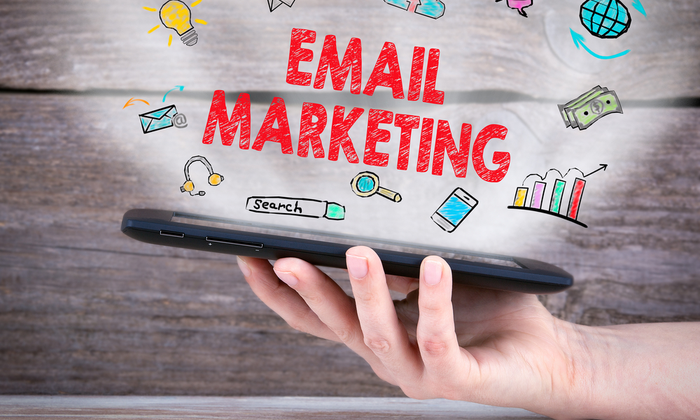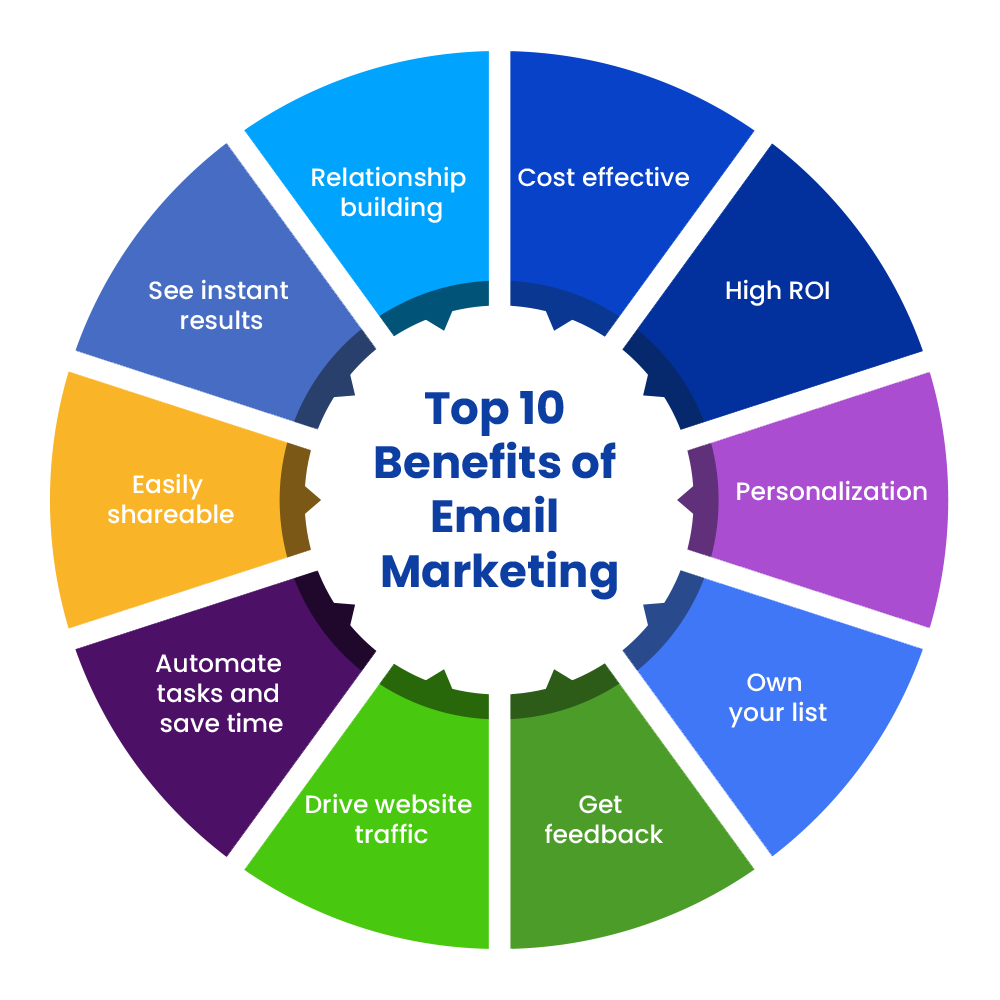What is email marketing ?
Email marketing is a powerful digital marketing strategy that involves sending targeted messages and promotional content to a group of recipients via email. It is a direct and cost-effective way for businesses to engage with their audience, build relationships, and promote products or services. Marketers use email campaigns to deliver personalized content, newsletters, promotions, and important updates, aiming to drive customer engagement and conversions. Successful email marketing requires strategic planning, segmentation of the audience, compelling content, and attention to metrics for tracking and analysis. With its widespread reach and ability to deliver tailored messages, email marketing remains a cornerstone in the modern marketer’s toolkit, fostering communication and fostering customer loyalty.

A brief history of email ?
Email has a fascinating history, evolving from humble beginnings to a ubiquitous form of communication. Its origins trace back to the 1960s when MIT’s CTSS system allowed users to leave messages for each other. Ray Tomlinson is credited with sending the first email in 1971, choosing the “@” symbol to denote sending messages between different machines. Throughout the 1970s and 1980s, email protocols like SMTP and POP were developed, standardizing email communication. The 1990s saw the rise of commercial email services like Hotmail and the integration of email into daily communication. Spam became a challenge, leading to the development of filters. In the 21st century, email continued to evolve with mobile integration, improved security measures, and the dominance of platforms like Gmail. Today, email stands as a fundamental tool for personal and business communication worldwide.

Advantages of email marketing ?
Email marketing offers numerous advantages for businesses seeking effective communication and promotion. Firstly, it provides a direct and personalized way to reach a targeted audience, fostering stronger customer engagement. The cost-effectiveness of email campaigns compared to traditional marketing channels is a significant benefit, enabling businesses to achieve high ROI. Email marketing allows for precise tracking of metrics, providing valuable insights into campaign performance and audience behavior. Automation features streamline processes, allowing businesses to send timely and relevant messages at scale. Moreover, email marketing facilitates easy segmentation, ensuring tailored content delivery to specific audience segments. It enhances brand awareness, builds customer loyalty, and offers a platform for promoting products, services, or events. Overall, the versatility, measurability, and direct engagement of email marketing make it a powerful tool for businesses of all sizes.

Email marketing examples ?
Email marketing offers numerous advantages for businesses seeking effective communication and promotion. Firstly, it provides a direct and personalized way to reach a targeted audience, fostering stronger customer engagement. The cost-effectiveness of email campaigns compared to traditional marketing channels is a significant benefit, enabling businesses to achieve high ROI. Email marketing allows for precise tracking of metrics, providing valuable insights into campaign performance and audience behavior. Automation features streamline processes, allowing businesses to send timely and relevant messages at scale. Moreover, email marketing facilitates easy segmentation, ensuring tailored content delivery to specific audience segments. It enhances brand awareness, builds customer loyalty, and offers a platform for promoting products, services, or events. Overall, the versatility, measurability, and direct engagement of email marketing make it a powerful tool for businesses of all sizes.

Email marketing types ?
Several successful email marketing examples showcase the versatility and impact of this strategy. E-commerce brands often employ abandoned cart emails, reminding customers of items left in their online carts to encourage completion of the purchase. Newsletters from content creators or businesses provide regular updates, valuable content, and exclusive offers, fostering audience loyalty. Welcome emails are effective for new subscribers, introducing them to the brand and offering incentives. Personalized recommendation emails leverage customer data to suggest relevant products or content based on past interactions. Seasonal promotions and holiday-themed emails create a sense of urgency and capitalize on festive occasions. Triggered emails, such as post-purchase or anniversary messages, enhance customer relationships. Overall, these examples illustrate how email marketing can be tailored to various purposes, driving engagement, sales, and brand loyalty.

Tips for building your email marketing list ?
Email marketing encompasses various types, each serving distinct purposes in engaging and converting audiences. Promotional emails focus on promoting products, services, or special offers to drive sales. Transactional emails, like order confirmations or shipping notifications, provide essential information to customers. Newsletters deliver regular updates, industry insights, and valuable content to build and maintain audience relationships. Drip campaigns involve a series of automated, targeted messages over time, guiding recipients through a specific journey. Welcome emails greet new subscribers, introducing them to the brand and encouraging further engagement. Behavioral emails leverage customer actions or preferences to deliver personalized content and recommendations. Re-engagement emails aim to win back inactive subscribers with enticing offers or relevant content. Each type plays a crucial role in a comprehensive email marketing strategy, catering to different stages of the customer lifecycle and diverse communication objectives.

conclusion :
In conclusion, a well-crafted email marketing list is the cornerstone of successful digital communication. By offering value, utilizing strategic placement, and engaging through various channels, businesses can cultivate a responsive audience. Prioritizing transparency and mobile optimization ensures sustained growth, fostering lasting connections with subscribers.

